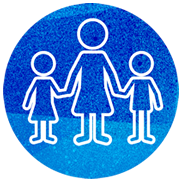We are strengthening our approach to keeping all children and young people safe from sexual abuse in Queensland schools and early childhood services by implementing the national principles for child safe organisations.
In 2020, the Department of Education released the
Aware. Protective. Safe. strategy and
Child safe environment map. This was in response to the final report from the Royal Commission into Institutional Responses to Child Sexual Abuse. The actions outlined in the strategy and roadmap reflected our response to the Royal Commission and additional initiatives to enhance our culture of awareness, protection and safety for all Queensland children and young people.
Since the release of the original strategy and roadmap, the department has continued to develop its suite of resources that strengthen our commitment to the safety and wellbeing of children and young people. In August 2021, the department released the second iteration of both the Aware. Protective. Safe. strategy and Child safe environment map, further reinforcing how we are building on our existing child safe environment by implementing the national principles for child safe organisations.
To support this, the department has also since released the Child safe environment report that describes the measures in place and actions undertaken that have strengthened the department’s commitment and approach to child safety as an area with the lowest appetite for risk.
Our commitment
The Department of Education is committed to:
- ensuring the safety and wellbeing of all Queensland children and young people through safe, supportive and disciplined environments
- supporting culturally safe educational environments for Aboriginal and Torres Strait Islander people
- working with an supporting partners to keep children and young people safe and well
- supporting people who have experienced sexual abuse and build their awareness of help available
- responding promptly and efficiently to allegations of harm to children and young people
- providing a child safe environment through implementation of the national principles for child safe organisations.
Our approach
-
Reflect—The department developed a roadmap to strengthen the approach to keeping children and young people safe in response to the Royal Commission into Institutional Responses to Child Sexual Abuse.
-
Strengthen—Implement improvements to our approach and enhance the capabilities of education partners through the provision of information and resources.
-
Embed—Integrate improved strategies into core business for all members of the community.
-
Review—Assess the efficacy of our approach and strengthen with evidence-based best practice.
Our implementation values

Involve
We will consult with children and young people in the decisions that affect them and listen to what they have to say.

Include
We will reflect equity and the diverse needs, lived experiences and cultural safety of all children and young people in our approach.

Inform
We will work with our families and communities to ensure they are aware and equipped to recognise, prevent and respond to child sexual abuse.

Implement
We will build on actions that support the national principles for child safe organisations and respond to recommendations from the Royal Commission into Institutional Responses to Child Sexual Abuse.

Improve
We will continuously improve our understanding and approach to preventing and responding to child sexual abuse.
National principles for child safe organisations
The
national principles (PDF, 1.9MB) were created by the National Children’s Commissioner and build upon the child safe standards that were recommended by the Royal Commission into Institutional Responses to Child Sexual Abuse in their final report, released in 2017. The national principles were endorsed by the Council of the Australian Governments (COAG) in February 2019.
The strategy uses Aware. Protective. Safe. to organise the
national principles into areas of implementation focus. The Department of Education currently satisfies the principles and will continue to review and strengthen its approach as an ongoing commitment to the safety and wellbeing of Queensland children.